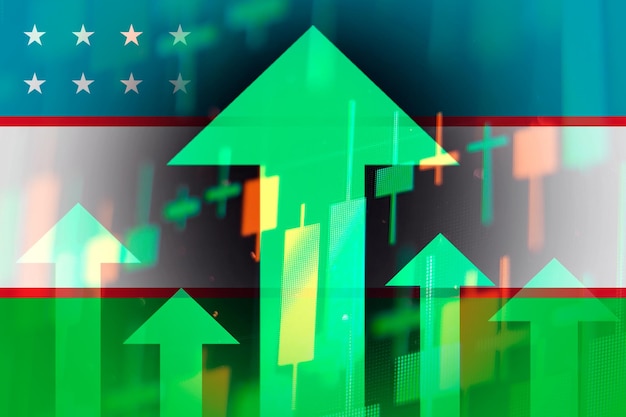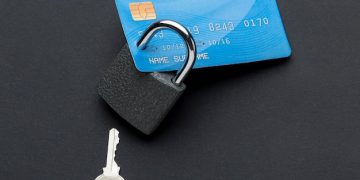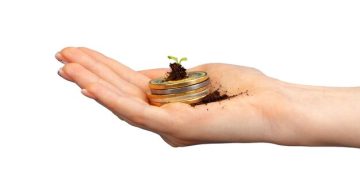Fed Rate Hike: How Does It Affect Your Wallet?

Federal Reserve Announces New Interest Rate Hike: What Does It Mean for Consumers? This decision impacts borrowing costs for credit cards, mortgages, and savings rates, influencing overall spending and investment strategies.
The Federal Reserve Announces New Interest Rate Hike: What Does It Mean for Consumers? This move sends ripples throughout the economy, directly affecting your credit card bills, mortgage rates, and even the interest you earn on savings. Let’s explore how this decision impacts your daily life.
Understanding the Fed’s Interest Rate Hike
The Federal Reserve, often called the Fed, plays a crucial role in managing the US economy. One of its primary tools is adjusting the federal funds rate. But what does it mean when the Federal Reserve Announces New Interest Rate Hike: What Does It Mean for Consumers?
Essentially, the federal funds rate is the interest rate at which commercial banks lend money to each other overnight. When the Fed raises this rate, it becomes more expensive for banks to borrow money.
The Ripple Effect: How Banks Respond
When the Fed increases the federal funds rate, banks typically respond by raising their prime rates. The prime rate is the interest rate that banks charge their most creditworthy customers. Here’s how it plays out:
- Increased Borrowing Costs: Higher prime rates translate into increased borrowing costs for consumers and businesses.
- Impact on Loans: Loans tied to the prime rate, such as adjustable-rate mortgages, home equity lines of credit (HELOCs), and some personal loans, become more expensive.
- Credit Card Rates: Credit card interest rates, which are often variable and linked to the prime rate, also tend to rise.

Impact on Credit Cards
One of the most immediate ways consumers feel the pinch of a Fed rate hike is through their credit cards. Credit card interest rates are typically variable, meaning they can change based on market conditions.
Given that most credit cards come with variable Annual Percentage Rates (APRs), any increase in the federal funds rate can quickly lead to higher interest charges on outstanding balances. This can make it more difficult to pay down debt.
Strategies for Managing Credit Card Debt
Here are some strategies to mitigate the impact of higher credit card interest rates:
- Pay Down Balances: Focus on paying down your credit card balances as quickly as possible to minimize the amount subject to interest charges.
- Balance Transfer: Consider transferring your high-interest balances to a credit card with a lower introductory APR.
- Debt Consolidation: Explore options like debt consolidation loans to combine multiple debts into a single loan with a lower interest rate.
Mortgages and Home Equity Lines of Credit (HELOCs)
For homeowners and prospective buyers, the Federal Reserve Announces New Interest Rate Hike: What Does It Mean for Consumers? in the mortgage market. Both mortgage rates and HELOCs are directly affected.
While fixed-rate mortgages are immune to immediate changes, adjustable-rate mortgages (ARMs) and HELOCs are more susceptible. Rising rates can significantly increase monthly payments for these types of loans.
Here’s how the rate hike affects different mortgage scenarios:
- Adjustable-Rate Mortgages (ARMs): ARMs have interest rates that adjust periodically based on market conditions. As the federal funds rate rises, ARMs become more expensive.
- Home Equity Lines of Credit (HELOCs): HELOCs typically have variable interest rates tied to the prime rate. If you have a HELOC, expect your interest rate and monthly payments to increase.

Savings Accounts and CDs
While rising interest rates can be a burden on borrowers, they can also be a boon for savers. When the Fed raises rates, banks often increase the interest rates they offer on savings accounts and certificates of deposit (CDs).
This is because banks need to attract deposits to fund their lending activities, and higher interest rates can make their savings products more attractive to consumers. However, the increase in savings rates often lags behind the increase in borrowing rates.
Maximizing Your Savings
Here are some strategies to take advantage of higher savings rates:
- Shop Around: Compare interest rates offered by different banks and credit unions to find the best deals.
- Consider High-Yield Savings Accounts: Look for high-yield savings accounts offered by online banks, which often provide more competitive rates.
- Explore Certificates of Deposit (CDs): CDs typically offer higher interest rates than savings accounts, but they require you to lock up your money for a fixed period.
Impact on Business and the Economy
The Federal Reserve Announces New Interest Rate Hike: What Does It Mean for Consumers? extends beyond individual finances. Businesses also feel the effects, which can, in turn, impact the broader economy.
Higher interest rates can make it more expensive for businesses to borrow money for investments, expansions, and operations. This can slow down economic growth and potentially lead to job losses.
How Businesses Respond
Here are some ways businesses might react to rising interest rates:
- Reduced Investment: Businesses may postpone or cancel planned investments if borrowing costs become too high.
- Hiring Freezes: Some companies may implement hiring freezes or even layoffs to reduce costs.
- Price Increases: Businesses may pass on increased borrowing costs to consumers in the form of higher prices.
The Fed’s Strategy and Future Outlook
The Federal Reserve’s decision to raise interest rates is typically aimed at controlling inflation. Inflation is the rate at which the general level of prices for goods and services is rising, and it can erode the purchasing power of money.
By increasing borrowing costs, the Fed hopes to cool down demand in the economy and bring inflation back to its target level. However, raising rates too aggressively can also lead to a recession.
Monitoring Economic Indicators
The Fed closely monitors various economic indicators to guide its monetary policy decisions, including:
- Inflation Rate: The Fed looks at the Consumer Price Index (CPI) and the Personal Consumption Expenditures (PCE) price index to gauge inflation.
- Unemployment Rate: The Fed aims to maintain a healthy labor market with low unemployment.
- Gross Domestic Product (GDP): The Fed tracks GDP growth to assess the overall health of the economy.
| Key Point | Brief Description |
|---|---|
| 💳 Credit Cards | Interest rates on credit cards are likely to increase, making debt more expensive. |
| 🏠 Mortgages | Adjustable-rate mortgages and HELOCs will see higher monthly payments. |
| 💰 Savings | Savings accounts and CDs may offer higher interest rates, but shop around for the best deals. |
| 📈 Economy | Businesses may reduce investment and hiring, potentially slowing down economic growth. |
Frequently Asked Questions (FAQ)
The Fed raises interest rates primarily to combat inflation. Higher interest rates make borrowing more expensive, which reduces spending and cools down the economy.
Changes in credit card interest rates typically happen within one or two billing cycles after the Fed announces a rate hike, since most credit cards have variable rates.
If you have an adjustable-rate mortgage or a HELOC, consider refinancing to a fixed-rate loan or making extra payments to reduce your principal balance.
Yes, rising interest rates can benefit savers by increasing the returns on savings accounts, money market accounts, and certificates of deposit (CDs).
Rising interest rates can negatively impact the stock market by making it more expensive for companies to borrow money, which can reduce earnings and investment.
Conclusion
In conclusion, the Federal Reserve Announces New Interest Rate Hike: What Does It Mean for Consumers? across various aspects of personal and business finance. From credit cards and mortgages to savings accounts and economic growth, it’s crucial to understand these impacts to make informed financial decisions. Stay informed, adjust your strategies, and navigate these changes wisely.





